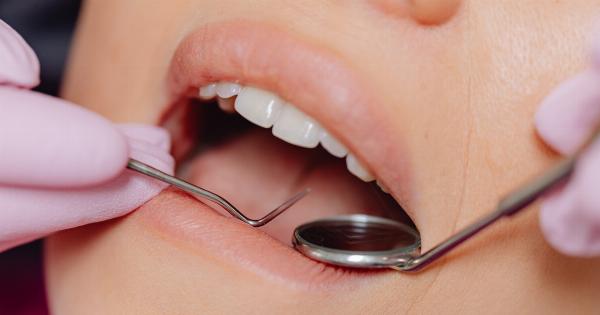Oral diseases are prevalent worldwide, affecting people of all age groups and demographics. These conditions encompass a range of disorders that affect the mouth, teeth, gums, and other oral structures.
From tooth decay and gum diseases to oral cancer and infections, oral diseases have a significant impact on the overall health and quality of life of individuals. It is alarming to note that over 50% of the world’s population suffers from one or more oral diseases, making it a major global health concern.
The Global Burden of Oral Diseases
Oral diseases are among the most common health conditions worldwide. They have a substantial impact on individuals, communities, and healthcare systems.
According to the Global Burden of Disease Study, oral diseases affect billions of people globally, causing pain, discomfort, and functional limitations.
Types of Oral Diseases
There are several types of oral diseases that affect a significant portion of the worldwide population. Below are some of the most prevalent oral conditions:.
Tooth Decay
Tooth decay, also known as dental caries or cavities, is one of the most common oral diseases. It occurs when bacteria in the mouth produce acid that erodes tooth enamel, resulting in the formation of cavities.
Poor oral hygiene, sugary diets, and inadequate fluoride exposure contribute to tooth decay.
Gum Diseases
Gum diseases, such as gingivitis and periodontitis, affect the tissues surrounding and supporting the teeth. These conditions are caused by bacterial infections, leading to inflammation, bleeding gums, bad breath, and even tooth loss if left untreated.
Oral Cancer
Oral cancer refers to the growth of malignant cells in any part of the oral cavity, including the lips, tongue, cheeks, floor of the mouth, and throat.
Tobacco and alcohol use, human papillomavirus (HPV) infection, and a family history of oral cancer are common risk factors for this potentially life-threatening disease.
Oral Infections
Various oral infections, such as oral thrush (candidiasis) and herpes simplex virus (HSV) infections, can affect the mouth and oral tissues.
These infections are caused by fungi, viruses, or bacteria and may result in discomfort, pain, and difficulty eating or speaking.
Malocclusion
Malocclusion refers to misalignment or incorrect positioning of the teeth and jaws. This condition can cause difficulties in chewing, speaking, and maintaining proper oral hygiene.
Malocclusion may result from genetic factors, thumb-sucking during childhood, or dental trauma.
Oral Health Disparities
It is important to acknowledge the existence of oral health disparities, where certain populations are disproportionately affected by oral diseases.
Factors such as socioeconomic status, access to dental care, cultural practices, and education significantly influence oral health outcomes. Disadvantaged and marginalized communities often face higher rates of oral diseases due to barriers in accessing preventive and curative oral care services.
The Impact of Poor Oral Health
Poor oral health has far-reaching implications beyond the mouth. It affects overall well-being, nutrition, self-esteem, and social interactions.
The consequences of oral diseases can be severe, including chronic pain, difficulty eating, speaking impairment, and reduced quality of life. Additionally, untreated oral infections and inflammations have been linked to systemic conditions like cardiovascular disease, diabetes, respiratory infections, and adverse pregnancy outcomes.
Prevention and Treatment
Preventing oral diseases primarily relies on maintaining good oral hygiene practices such as regular brushing, flossing, and mouthwash use.
Additionally, a healthy diet low in sugary foods and drinks, along with regular dental check-ups, play a crucial role in oral health maintenance. Community-wide initiatives for education and awareness can also help in preventing oral diseases and promoting oral health.
Treatment for oral diseases varies depending on the specific condition. It may involve dental fillings, root canal treatments, extractions, scaling and root planing, or surgical interventions for severe cases.
Early diagnosis and timely intervention are vital to prevent complications and improve oral health outcomes.
The Role of Dental Professionals
Dental professionals, including dentists, dental hygienists, and oral health specialists, play a pivotal role in preventing and managing oral diseases.
They provide preventive treatments, diagnose oral conditions, and offer treatment options tailored to individual needs. Dental professionals also educate patients on proper oral hygiene practices and promote oral health awareness in communities.
Global Oral Health Initiatives
Recognizing the significant impact of oral diseases, several global initiatives and organizations are working towards improving oral health worldwide.
These include the World Health Organization (WHO), FDI World Dental Federation, and government-led oral health programs. The efforts focus on prevention, capacity building, and increasing access to oral health services, particularly in underserved regions.
The Way Forward
To address the global burden of oral diseases effectively, a comprehensive approach encompassing prevention, education, policy reform, and increased access to oral healthcare services is crucial.
Governments, healthcare organizations, and individuals must work collaboratively to prioritize oral health and promote awareness about the prevention and treatment of oral diseases. Improving oral health not only enhances quality of life but also contributes to overall well-being and reduces the burden on healthcare systems.






























